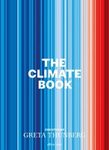![The Impact of Melting Ice on the Ecosystems in Greenland Sea The Impact of Melting Ice on the Ecosystems in Greenland Sea]()
Click to have a closer look
About this book
Contents
Customer reviews
Biography
Related titles
About this book
Arctic marine ecosystems are largely impacted by changes associated with global warming. The sea ice in Greenland Sea plays an important role in regional and global climate system. The Impact of Melting Ice on the Ecosystems in Greenland Sea investigate the relationships between phytoplankton biomass, measured using remotely sensed chlorophyll-a, aerosol optical depth and sea-ice cover in the Greenland Sea (10°W-10°E, 65-80°N) over the period 2003-2012. First hand Satellite data was used to do correlation analysis. Enhanced statistics methods, such as Lag regression method and cointegration analysis method are used for correlation analysis and long term equilibrium relationship between two variables. ARMA model was used to prediction time series in the future 3 years. The Impact of Melting Ice on the Ecosystems in Greenland Sea also gives general outline of ecosystem in Greenland Sea and how the ice impacts the local ecosystems. The Impact of Melting Ice on the Ecosystems in Greenland Sea not only gives outline of ecosystem in Greenland Sea, how the ice impact to the local ecosystems, but also provides valuable statistical methods on analysis correlations and predicting the future ecosystems.
Contents
- Overview Greenland Sea
- Ecosystems in Greenland Sea
- Data and Methods
- Chlorophyll-a, Ice Cover and North Atlantic Oscillation
- Aerosol Optical Depth, Ice Cover and Cloud Cover
- Photosynthetically Active Radiation, Ice Cover and Sea Surface Temperature
- The predictions for Chlorophyll-a, Aerosol Optical Depth and Photosynthetically Active Radiation
- Conclusion and Discussion
Customer Reviews
Biography
Dr. Bo Qu (born November 26, 1962 at Nantong, Jiangsu Province and Ph D. from Napier University in 1999 in Edinburgh) was a researcher in UK, HKU and Australia and now is an advanced mathematics teacher in university, China. Her PhD research was the use of fractional Brownian motion in the modelling of the dispersion of contaminants in fluids. After half years work in Queen's University of Belfast on Irish Sea Modeling, she went to Hong Kong University, did hydraulic modeling for for Hong Kong Coastal water, especially the 1998 Hong Kong massive red tidals research using Delft 3D. She then went to Griffith University, Brisbane, Australia joined Environmental modeling group and did DMS research in Arctic Ocean. She then focused on the ecosystem research and using Genetic Algorithm on DMS model parameter calibrations. Her research interests including Polar Ecosystem research; Climate system GCM modeling, Hydraulic Modeling for coastal water and oceanic surface; Stochastic Modeling, especially particle tracking modeling using fractional Brownian motion. Now she is university associate professor and teaching advanced mathematics for Chinese students and foreign students, at the same time, undertaking the national natural funding in China, coaching postgraduate students and undergraduate students to do the environmental modeling in Arctic Ocean.











































